
This shows the waters of the Antarctic Peninsula, one of many global sites where water samples were collected and sent to the MBL for analysis of bacterial populations. Credit: Courtesy of Hugh Ducklow, Palmer Station LTER
New research from scientists at the Marine Biological Laboratory shows that marine bacteria are not just homogenous populations in the ocean and that different bacteria prefer certain temperatures, levels of nutrients, light and salinity.
In another blow to the “Everything is Everywhere” tenet of bacterial distribution in the ocean, scientists at the Marine Biological Laboratory (MBL) have found “bipolar” species of bacteria that occur in the Arctic and Antarctic, but nowhere else.
And, surprisingly, they found even fewer bipolar species than would turn up by chance if marine bacteria were randomly distributed everywhere. “That suggests that there are forces that are limiting the dispersal of bacteria in the ocean,” says Linda Amaral-Zettler, a scientist in the MBL’s Bay Paul Center and faculty member in the Brown-MBL Partnership.
The discovery will be reported this week in Proceedings of the National Academy of Sciences, with Amaral-Zettler as corresponding author.
“Our study shows that marine bacteria are not just homogenous populations in the ocean. They are more selective than that. Different bacteria prefer certain temperatures, levels of nutrients, light and salinity, ” Amaral-Zettler says. “Understanding their distribution is really important because bacteria play crucial roles in the ocean ecosystem services we rely upon, such as providing food stocks, and in climate. As our environment changes, and temperatures become warmer, we have to pay attention to shifts in bacterial distributions, as well as those in animals and plants.”
The study is one of many born from the gigantic database on marine microbes created during the International Census of Marine Microbes (ICoMM), a part of the Census of Marine Life. It also contains data from MIRADA-LTERS (Microbial Inventory Research Across Diverse Aquatic Long-Term Ecological Research Sites).
Over a six-year period (2004 to 2010), ICoMM scientists from many nations collected water samples and, crucially, related environmental data from a broad range of marine ecosystems, from open ocean to undersea volcanoes, densely populated coastlines to polar seas. MIRADA-LTERS also contributed to the census.
“One of the exciting things about ICoMM and MIRADA is that they gave us our first opportunity to even think about microbial biogeography (distributions) in a global way,” Amaral-Zettler says. “Before, many people thought microbes distribute everywhere, so we don’t have to worry if some disappear locally. But we are finding that, no, there is a biogeography of very small organisms, and there may be consequences to that.”
Rather than buttressing what is known as the Baas-Becking tenet in microbial ecology (“Everything is everywhere, but the environment selects,”) the present study suggests “dispersal limitation plays an important role in marine bacterial distributions before environmental selection makes a difference,” the authors write.
What the barriers to dispersal of marine microbes may be is under investigation. A 2011 study issuing from ICoMM data found bacterial assemblages correlating to different water masses in the ocean (Agogué et al, Mol. Ecol. 20: 258-74, 2010). “We think the water masses themselves may be potential barriers to microbial dispersal,” Amaral-Zettler says. “The ocean currents that occur on the equator may be physical and in some cases geochemical barriers that limit the distribution of certain types of bacteria.” This means a warming climate, which affects ocean temperature, salinity, pH levels, and circulation patterns, can significantly impact marine microbial distributions.
Mitchell Sogin, director of the MBL’s Bay Paul Center, is a co-author of the present study. Sogin co-directed ICoMM; Amaral-Zettler was the project’s program manager. Amaral-Zettler also led MIRADA-LTERS, which conducted a biodiversity survey across all 13 of the U.S. National Science Foundation’s aquatic Long-Term Ecological Research sites.
Bacteria and other microbes are essential catalysts for all of the chemical reactions that shape planetary change and habitability, such as cycling of carbon, nitrogen, oxygen, sulfur, iron, and manganese through the environment. As an ICoMM summary states, “Marine microbes regulate the composition of the atmosphere, influence climate, recycle nutrients, and decompose pollutants. Without microbes, multicellular animals on Earth would not have evolved or persisted over the past 500 million years.” (McIntyre AD, ed., Life in the Worlds Oceans [Blackwell Publishing: 2010], p. 223).
Reference: “Marine bacteria exhibit a bipolar distribution” by Woo Jun Sul, Thomas A. Oliver, Hugh W. Ducklow, Linda A. Amaral-Zettler and Mitchell L. Sogin, 16 January 2013, Proceedings of the National Academy of Sciences.
DOI: 10.1073/pnas.1212424110
The lead author of the present PNAS study is Woo Jun Sul, a postdoctoral scientist in the Bay Paul Center. Hugh Ducklow, director of the Palmer Station Long-Term Ecological Research site in Antarctica and former director of the MBL Ecosystems Center, provided the water samples from Antarctica. Thomas A. Oliver of University of Hawaii provided modeling analysis.

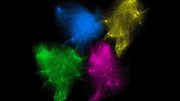

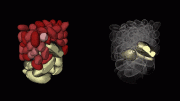
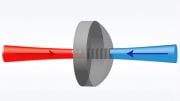

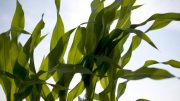
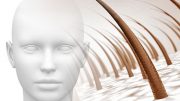
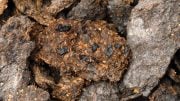
Be the first to comment on "Marine Bacteria Are Not Homogenous Populations in the Ocean"